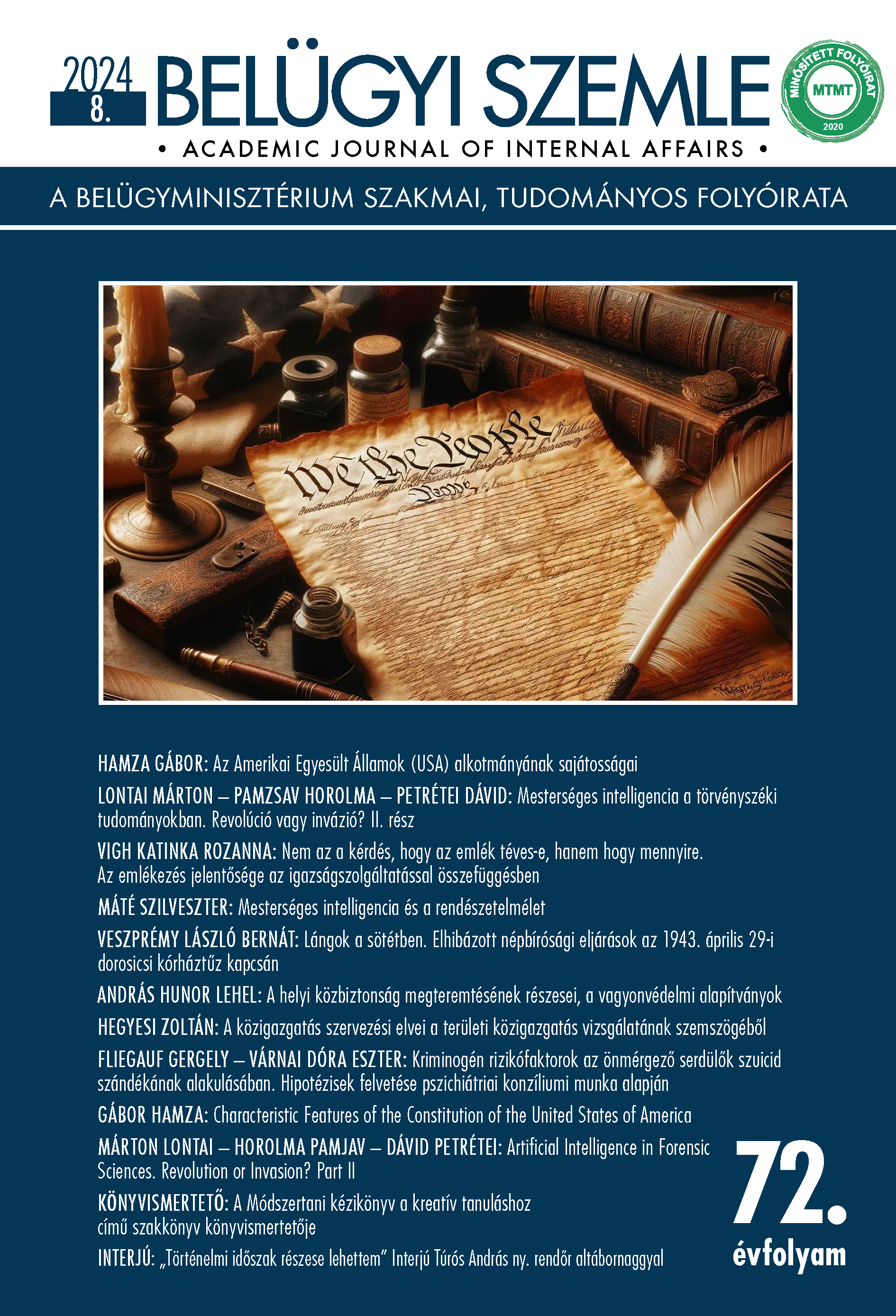Abstract
Aim: This paper deals with the infamous hospital fire of 29 April 1943, which took place in the occupied parts of the Soviet Union in the village of Dorosic. As is well known in the literature, a Hungarian camp hospital full of Jews in labour service recovering from typhus burned down. The hospital fire officially killed 396 labour servicemen. The literature has so far assumed that the hospital fire was caused by Hungarian soldiers guarding the Jews. The soldiers locked the doors of the building and then opened fire on those trying to escape. The aim of this study is to find out how the criminal trials after this event were conducted.
Methodology: In terms of methodology, it explores all the trials in the People’s Court concerning the Dorosic hospital fire, comparing the testimonies, indictments and verdicts in the different trials. In particular, the study focused on the trials of Miklós Réz and László Gyarmati at the Miskolc People’s Court, László Szentendrey at the same People’s Court, and Gusztáv Eckl and Dezső Szentkatolnay at the Budapest People’s Court. It notes that during the trials above, Réz and Gyarmati were convicted and executed, and that Szentkatolnay and Szentendrey were also convicted (the latter in absentia), partly on the same charges.
Findings: It points out the discrepancies between the indictments, convictions and confessions used.
Value: The study’s value lies in the fact that it analyses together data from previously unexplored and unmatched cases. Ultimately, the study raises serious questions about the historical truth that can be known and the extent to which war atrocities can be known.
References
Állambiztonsági Szolgálatok Történeti Levéltára, 3.1.9. V-102326.
Állambiztonsági Szolgálatok Történeti Levéltára, 3.1.9. V. 129355/b.
Budapest Főváros Levéltára, VII.5.e.1950.1573.
Budapest Főváros Levéltára, VII.5.e.1950.6882.
Budapest Főváros Levéltára, XXV.1.a. 1754/1947.
Budapest Főváros Levéltára, XXV.1.a. 2380/1945.
Budapest Főváros Levéltára, XXV.1.a.1.1945.608.
Budapest Főváros Levéltára, XXV.1.a.1.1945.1428.
Budapest Főváros Levéltára, XXV.1.a.1.1945.1679.
Budapest Főváros Levéltára, XXV.1.a.1.1945.1778.
Budapest Főváros Levéltára, XXV.1.a.1.1945.3435.
Budapest Főváros Levéltára, XXV.1.a.5.1949.301.
Budapest Főváros Levéltára, XXV.1.b. 507/1947.
Braham, R. L. (1997). A népirtás politikája: a holocaust Magyarországon. 2. Belvárosi Kvk.
Csongrád Megyei Főügyészség, B.10244/1961.
Deportáltakat Gondozó Országos Bizottság, 3028.
Hajdú-Bihar Megyei Levéltár, XXV. 1. 512/1945.
Lőwy D. (2014). Valójában mi is történt Dorosicsban? A hetven évvel ezelőtti vizsgálat megbízhatósága. Kritika, 43(1-2), 2–6.
Magyar Nemzeti Levéltár Borsod-Abaúj-Zemplén Megyei Levéltára, XXV.4. 224/1945.
Magyar Nemzeti Levéltár Borsod-Abaúj-Zemplén Megyei Levéltára, XXV. 4. 20/1948.
Magyar Nemzeti Levéltár Csongrád Megyei Levéltára, XXV.8. 206/1945.
Magyar Nemzeti Levéltár Csongrád Megyei Levéltára, SZMB 2463/1950.
Magyar Nemzeti Levéltár Országos Levéltára, XX.1.b.Nfü.1470/1947
Magyar Nemzeti Levéltár Országos Levéltára, XX.4.b.NOT.VI.1556/1947.
Magyar Nemzeti Levéltár Országos Levéltára, XX.4.b.NOT.II.1269/1948.
Sz. N. (1945, július 22). Felvidéki Népszava.
Sz. N. (1946, április 12). Kossuth Népe.
Sz. N. (1947, szeptember 18). Új Élet.
Sz. N. (1947, szeptember 19). Felvidéki Népszava.
Sz. N. (1948, június 27). Kossuth Népe.
Sz. N. (1948, augusztus 29). Világosság.
Sz. N. (1948, december 31). Észak-Magyarország.
Sz. N. (1962, július 1). Új Írás.
Yad Vashem Archives, O.33/10887.
Yad Vashem Archives, O.41/1317.

This work is licensed under a Creative Commons Attribution-NonCommercial-NoDerivatives 4.0 International License.
Copyright (c) 2024 Academic Journal of Internal Affairs

